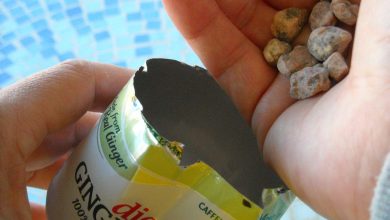Correcting resource guarding in multiple-pet households

Resource guarding, a behavior where pets exhibit protective tendencies over food, toys, or resting spots, can pose significant challenges in households with multiple animals. This behavior often leads to tension, and sometimes aggression, disrupting the harmony within the home. Understanding the underlying causes of resource guarding is crucial for pet owners seeking to foster a peaceful and cooperative environment for all their animals. In this article, we will explore effective strategies to identify, manage, and correct resource guarding behaviors in multiple-pet households. By implementing these techniques, pet owners can ensure a balanced and harmonious coexistence among their furry companions.
Understanding Resource Guarding Behavior in Pets
When living in a multi-pet household, it’s crucial to understand the dynamics of resource guarding to maintain harmony. Resource guarding is a behavior exhibited by pets to protect items they consider valuable, such as food, toys, or even human attention. This instinctual behavior can lead to tension or aggression between pets if not addressed properly. Recognizing the triggers and signs of resource guarding is the first step in mitigating conflicts. Common indicators include growling, snapping, or blocking access to the coveted item. It’s important to observe each pet’s body language to prevent escalation.
To effectively manage and correct resource guarding, consider implementing the following strategies:
- Separate Feeding Areas: Designate distinct feeding zones for each pet to reduce competition over food.
- Controlled Access to Toys: Rotate toys regularly and provide supervised playtime to prevent hoarding.
- Positive Reinforcement: Reward pets for calm behavior around shared resources to encourage cooperation.
- Training Sessions: Incorporate basic commands and impulse control exercises to improve obedience and reduce anxiety.
By proactively managing the environment and fostering positive interactions, you can help your pets coexist peacefully, reducing the stress and friction that resource guarding can cause.
Creating a Safe Environment for All Pets
In households where multiple pets reside, resource guarding can manifest as a significant challenge, often resulting in tension or even aggression. To mitigate these issues, it’s essential to implement a strategy that promotes harmony and understanding among all pets. Start by ensuring that each pet has their own dedicated space for eating and resting. This could mean setting up separate feeding stations and individual beds or crates where they can retreat to feel secure. Additionally, observe your pets’ behavior to identify any triggers that may lead to resource guarding, such as specific toys or food items.
Consider incorporating the following strategies to create a more peaceful environment:
- Positive Reinforcement: Reward pets for calm behavior around resources with treats or affection, reinforcing the idea that sharing is a positive experience.
- Training Commands: Teach and consistently use commands like “leave it” or “stay” to manage situations where resource guarding might occur.
- Gradual Desensitization: Slowly introduce pets to shared resources, starting with low-value items and gradually moving to more coveted ones, while monitoring their reactions closely.
- Regular Exercise: Ensure pets receive adequate physical activity to reduce stress and pent-up energy that might contribute to guarding behaviors.
By employing these methods, pet owners can cultivate a safe and harmonious environment where all furry companions feel secure and content.

Implementing Positive Reinforcement Techniques
To address resource guarding in a household with multiple pets, employing positive reinforcement techniques can foster harmony and reduce tension. This approach focuses on rewarding desired behaviors rather than punishing negative ones, creating an environment where pets feel safe and valued.
- Identify Triggers: First, observe the situations that lead to guarding behaviors. It could be food, toys, or even specific spaces. Recognizing these triggers is crucial for targeted intervention.
- Reward Sharing: Encourage sharing by rewarding pets when they allow others to approach their guarded items. Use treats or verbal praise to reinforce this behavior.
- Gradual Desensitization: Slowly expose your pets to situations that previously led to guarding, rewarding them for calm behavior. Start with short, supervised sessions and gradually increase the duration.
- Separate Feeding Areas: If food guarding is an issue, provide each pet with their own designated eating space. This minimizes competition and allows them to eat peacefully.
- Training Commands: Teach commands such as “leave it” or “drop it” using positive reinforcement. These commands can help redirect attention and diffuse potential guarding scenarios.
By consistently applying these techniques, you can create a more harmonious multi-pet household where each animal feels secure and respected. Remember, patience and consistency are key to success.

Managing Mealtime to Prevent Conflicts
In households with multiple pets, mealtime can become a battleground if not managed properly. To prevent conflicts and address resource guarding, it is crucial to establish a structured feeding routine. Begin by ensuring that each pet has its own designated eating area, ideally in separate rooms or at least at a distance from each other. This helps minimize competition and anxiety. Consistency is key, so feed your pets at the same times each day to create a predictable environment.
Consider incorporating the following strategies to reduce tension:
- Separate Feeding Stations: Use barriers or baby gates to create distinct spaces where each pet can eat without interference.
- Supervised Meals: Stay nearby during mealtime to monitor interactions and intervene if necessary.
- Slow Feeders: For pets that eat too quickly, use slow feeder bowls to encourage a more relaxed pace.
- Training: Reward calm behavior and practice commands like “sit” and “stay” before meals to reinforce positive associations.
By implementing these techniques, you can foster a peaceful mealtime atmosphere, reducing the likelihood of conflicts and ensuring a harmonious coexistence among your pets.



